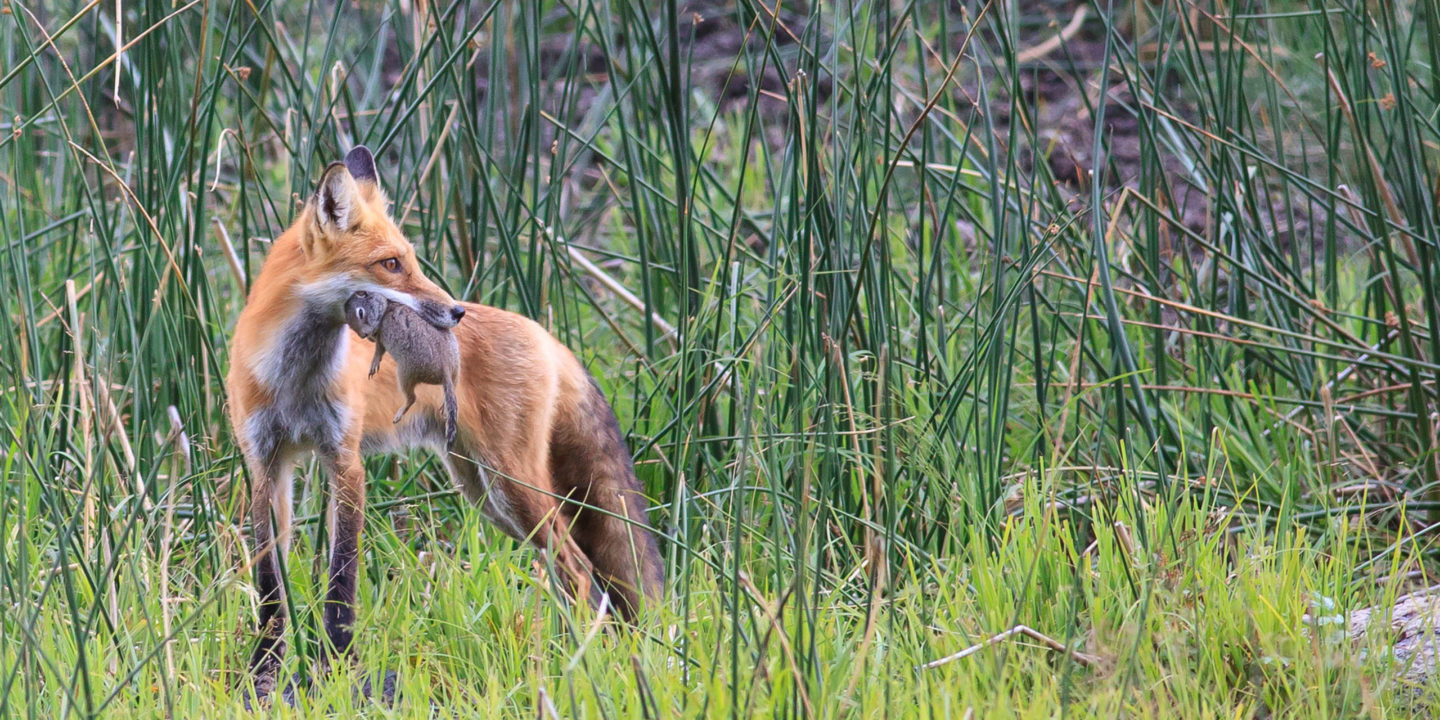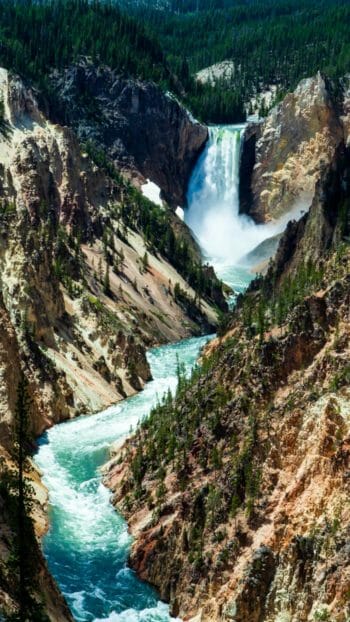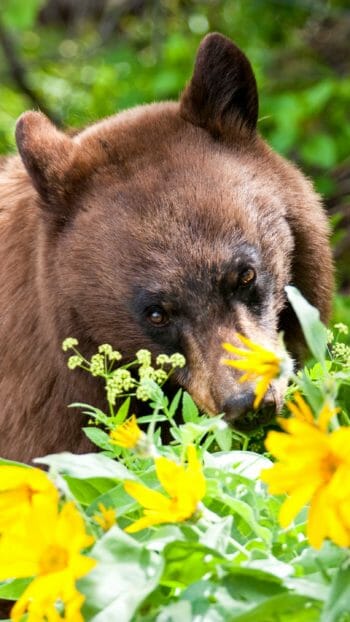Lewis River
Overall, there are nearly 1,000 riverways in Yellowstone National Park, creating approximately 2,500 miles of running water within the park boundaries. When traveling by vehicle through the park you will pass by perhaps only 14 of these waterways. If traveling to or from the south entrance of Yellowstone National Park, one very scenic waterway you will parallel is the Lewis River. There is a stretch of this river between the Lewis River Canyon and Lewis Lake that has the potential to house a multitude of wildlife species.
Beaver
From the roadway you’ll be able to see beaver lodges built right along the shore, this animal can be tough to find though because it is yet another crepuscular species. Believe it or not, we have wolves to thank for the survival of the beaver in Yellowstone. After nearly being hunted to extinction by fur trappers throughout the 1800’s, beavers also had to contend with the overpopulation of elk in the park after the extirpation of wolves by humankind. Without that top predator the elk population grew exponentially, leading to this herbivore desperately overgrazing areas such as willow groves along waterways. Willow is a vital source of food for beavers, so until the elk population balanced out after the reintroduction of wolves in 1995 this large aquatic rodent was in dramatic decline.
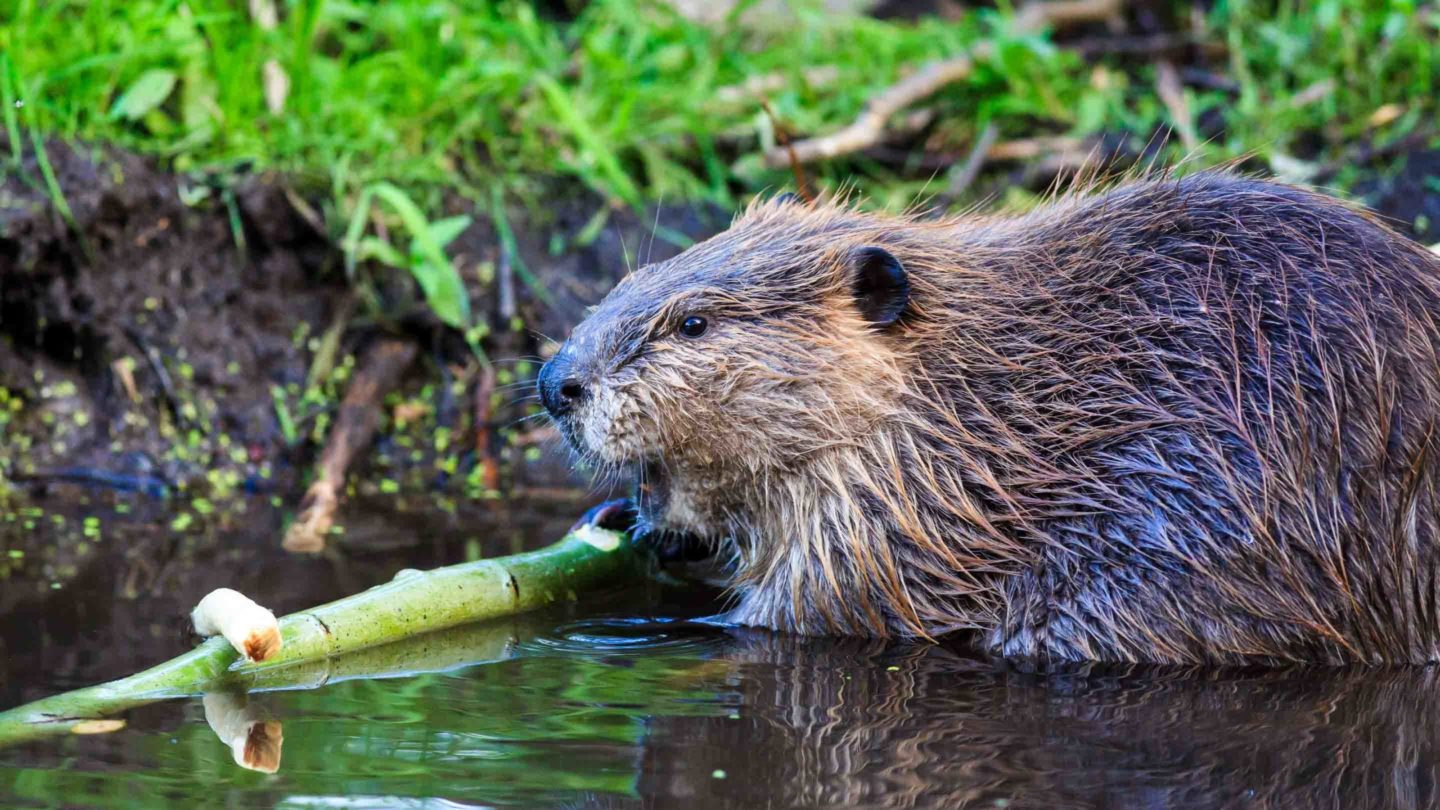
Moose
Moose also feed primarily on willow and aquatic vegetation in the summer. Therefore this stretch of the Lewis River can be another great area to seek out this large mammal. However, finding moose in this corner of the park may not be as common as you would expect. In 1988 an intense summer of wildfires destroyed a lot of riparian habitat, so moose are still making a gradual return to their native range as vegetation continues to recover.
River Otter
Another animal that hunts, rather than forages, along the Lewis River is the river otter. Otters will be slipping through the water seeking out fish, frogs and insects to feed on. Quite often you might hear an otter before seeing one, as they will be very vocal if hunting with companions. They often make high pitched chirping sounds when surfacing, sounding deceptively like a bird as they swim gracefully through the water after each other, darting after fish or diving underwater to inspect under rocks for aquatic invertebrates to feed on.
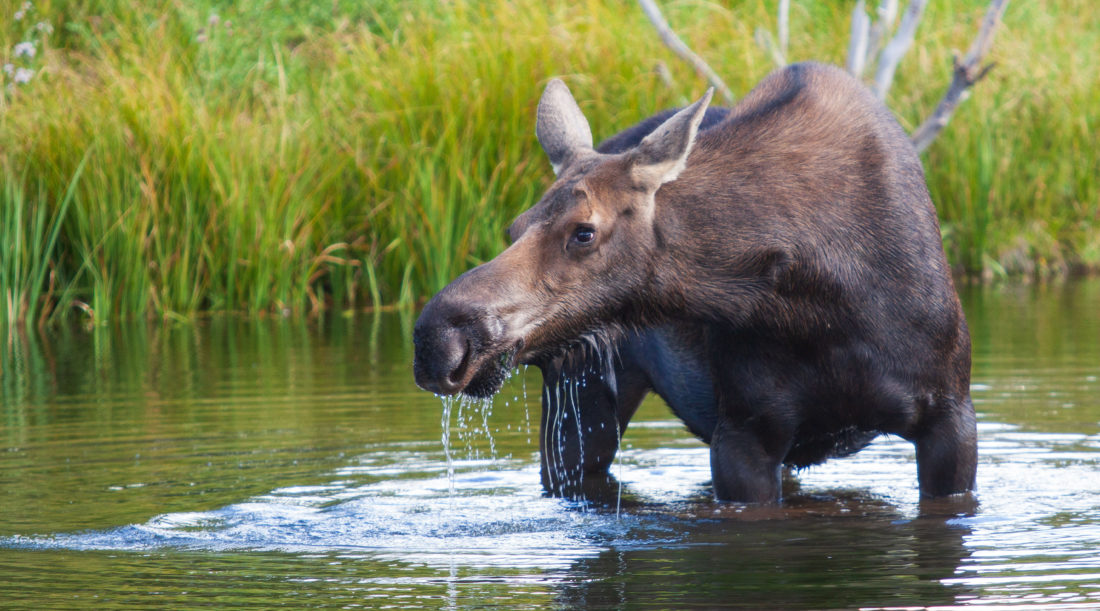
American Dipper
For those of you fascinated by the avian species of Yellowstone, the Lewis River is also a wonderful place to seek out North America’s only aquatic songbird – the American dipper! Not as big as the beaver, moose or otter, but they do have the capacity to be as loud. This small gray bird will alternate between perching on rocks and diving into shallow stretches of water chasing after aquatic bugs. Above water the American dipper has a rapid-fire style of chirping and singing, and often when perched on a rock will continually make little dipping motions with its body. These attributes make this bird unmistakable and quite entertaining to observe.
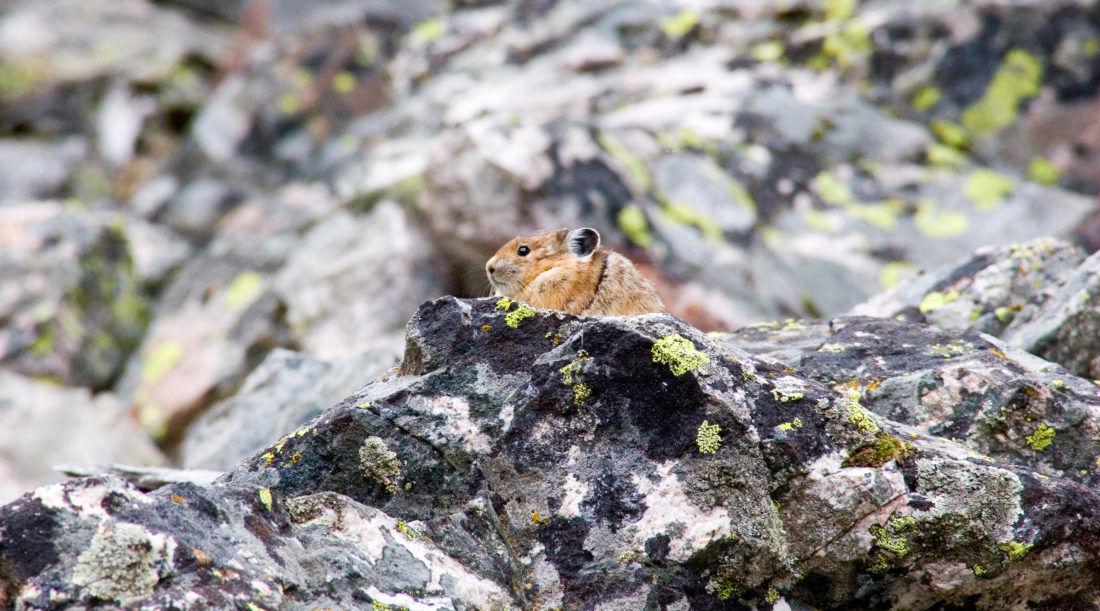
American Pika
Another small, entertaining animal that can be found near the Lewis River is the American pika. This little, gerbil-like creature is actually in the rabbit family, though they lack the long ears and fluffy tail. They are however quite astute at hopping from boulder to boulder as they spend the day feeding on and collecting vegetation. Pika prefer rocky habitats, so when driving alongside the Lewis River keep an eye out for boulder fields near the roadway. Find a safe spot to pull over and inspect the rocks for any small, gray animals moving around atop them, or keep an ear out for vocalizations. Pika are very talkative mammals, the sound they make could be described as a sort of bleating, or a nasally “PEEENT” (will make more sense upon hearing it yourself). The males will vocalize frequently during the breeding season throughout summer, though any of the pika may call out to warn others of a potential predator- which in this case could be you pulling your vehicle over to observe them.
Something fascinating about this little creature is that they do not hibernate, which is incredible because winters in Yellowstone National Park can last as long as eight months! The American pika will remain active all winter in tunnels they dig through snow, dirt and in between boulders. In the summer the pika will collect grasses and other plants, setting the vegetation out of rocks to allow it to dry out in the sun, and essentially cultivate hay of their own which they will cache and feed on throughout winter. Quite an incredible feat of survival for an animal that only weighs between 7-9 ounces.
These are just a few of the areas you could find wildlife in the vastness of Yellowstone National Park. Overall, there are around 300 different species of birds, 16 varieties of fish, eleven species of reptiles and amphibians and a whopping 67 species of mammal to behold in that 2.2 million acre expanse. You could always set out on your own to try and find as many as these species as possible, or, for the best opportunities at spotting wildlife, join us for a guided tour of the park.

